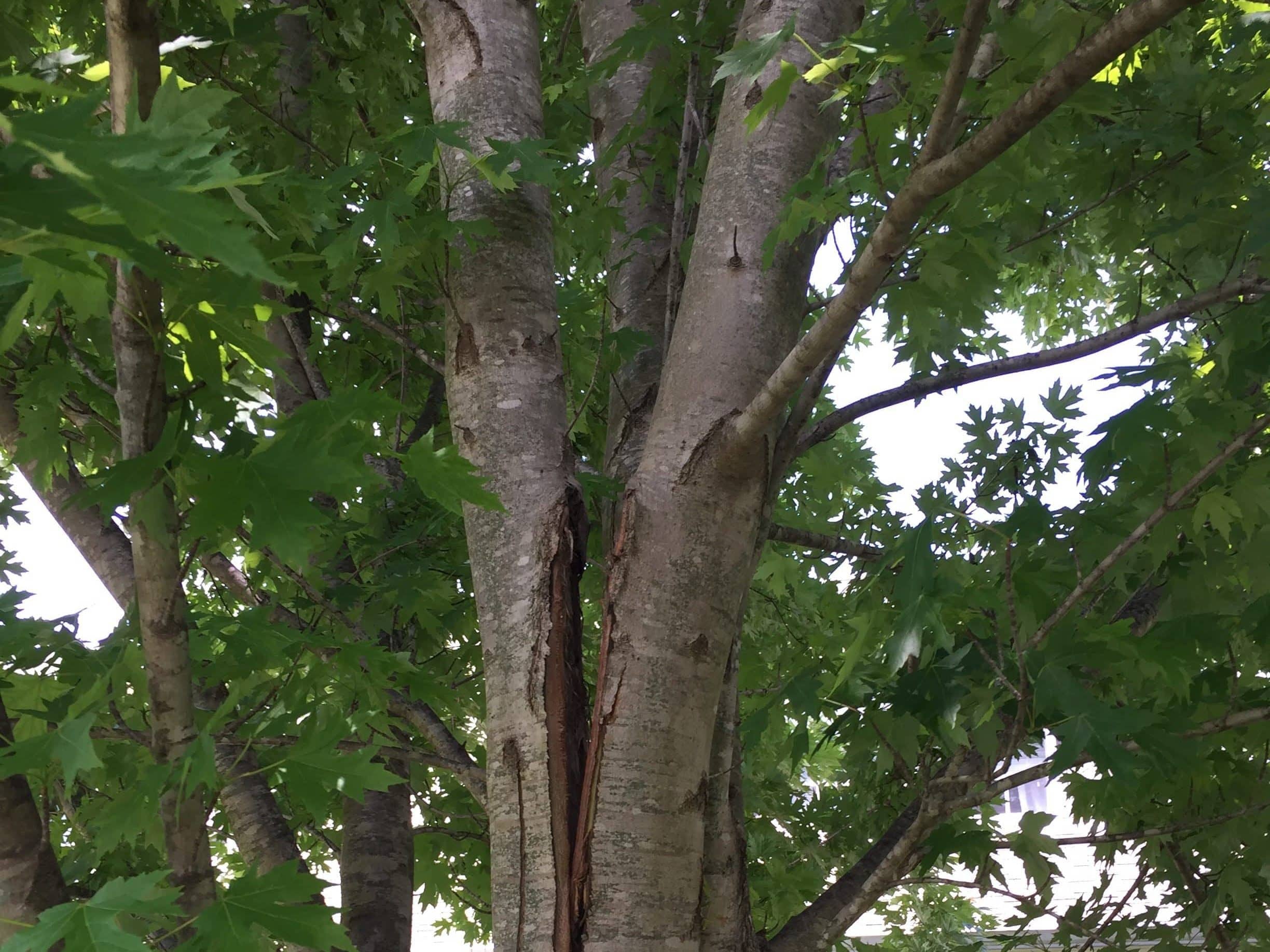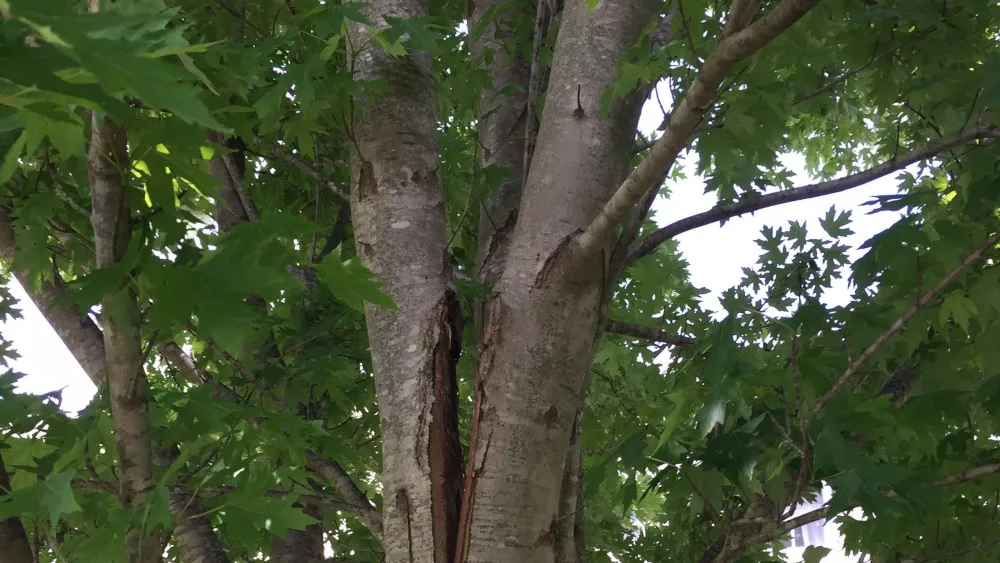No one likes it when their favorite landscape tree splits apart with a heavy snow load or ice. Trees take considerable time to grow and develop and the loss of shade or aesthetic appeal a specific tree provides cannot be quickly replaced. Therefore, as tree owners, we should take preventative steps that protect and encourage the proper development of our landscape trees thereby greatly reducing the potential for damage.
To prevent structural problems in our trees, even if you only have one tree in your landscape, we need to have a management program. And that program should be devoted to preventing and solving three structural problems.
First, we need to prevent codominant stems from developing. A codominant stem is a stem or branch growing at about the same rate and diameter as another stem originating from the same place on the tree. Most often we think of double leaders which are two codominant stems growing from the center of the tree, both assuming the role of the leader. If left unchecked, these two stems push each other apart and become a weak point in the tree and the site of tree failure when wind or snow adds force on the limbs.
This is easily prevented when trees are young by selecting the healthier, straighter leader and removing the other. But severe stress and damage can occur when this correction is made later when the leaders are more than a third the size of the trunk.

Secondly, a management program can help you identify aggressive branches and stems developing low on the tree, which in time will droop and require pruning. Determine where you want the lowest branches to be on your tree. This decision varies by each person. Most people want to be able to drive their riding mower under their tree to mow, so that becomes their lowest branch height. Trees growing near sidewalks or driveways may need a higher lowest branch.
On newly planted trees, the tree itself may be shorter than where you want your lowest limbs. That’s where a management program will remind you to go back to this tree in 3, 5, or 10 years and make appropriate pruning cuts. As in the example above, the larger the limb becomes before pruning, the more damage you will inflict on your tree. Our goal should be to prune limbs less than one third the diameter of the trunk.
Finally, address aggressive branches in the canopy. Your objective here is to space main branches along the dominant trunk. A minimum of 2 to 3 feet of spacing is best for older trees. You also want to select these scaffold branches so that they rotate around the trunk and are not all growing from one side of the tree. Don’t allow any branch to grow larger than 50 percent of the trunk diameter. Prevent branches originating in the lower 15 to 20 feet of shade trees from sending stems up into the permanent canopy.
As a word of caution, don’t get over aggressive in taking out limbs so that you develop a tree where there are only branches in the topmost portion of the tree. Ideally a little more than half of the entire height of the tree should have well developed scaffold branches.
Have more questions on pruning? Join me on February 4, 2021, from 12:00 to 1:00pm, I’ll be hosting a weekly Zoom meeting called “Garden Q&A Live”. Feel free to pop in and ask gardening questions or discuss what’s going in your garden during the week. For details visit: www.ChristianCountyHorticulture.com
— Kelly Jackson, Christian County Extension Agent




